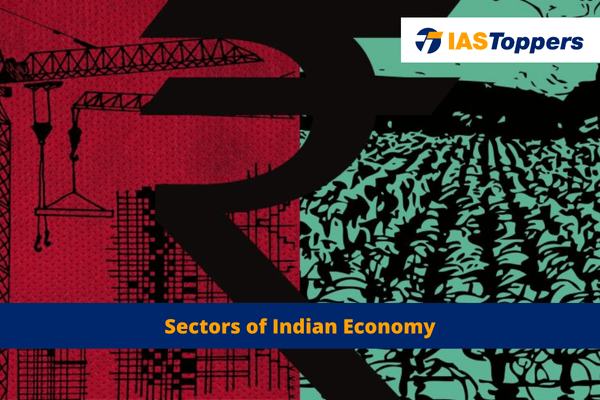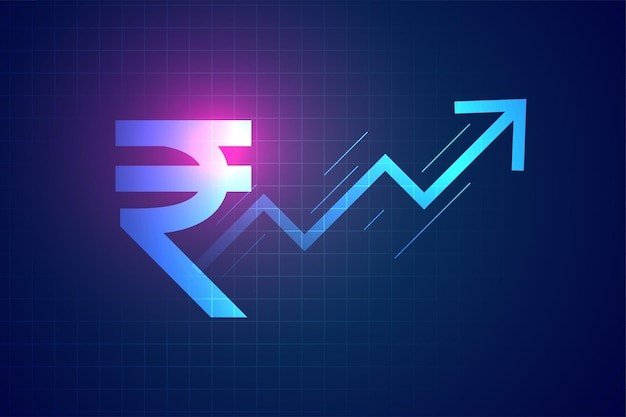Sectors of the Indian economy play an important role in its overall development and growth. These sectors are primary, secondary, and tertiary. They encompass a wide range of industries and services. The classification of sectors has evolved with the expanding nature of the economy.
Sectors of Indian Economy will be helpful for UPSC IAS Exam preparation. GS Paper-3 Indian Economy.
Table of Content
- What are the Sectors of Indian Economy?
- Historic Evolution
- Primary Sector (Raw Materials)
- Secondary Sector (Manufacturing)
- Tertiary Sector (Services)
- Conclusion
- Frequently Asked Questions (FAQs)
What are the Sectors of Indian Economy?
- Sectors of Indian Economy are often categorized into primary, secondary, and tertiary.
- In the 20th century, economists proposed distinguishing traditional tertiary services from the “quaternary” and quinary service sectors.
- Quaternary sector involves information- and knowledge-based services, whereas the quinary sector includes industries focused on human services and hospitality.
- Economic theories further divide economic sectors into economic industries.
Historic Evolution
- The ancient economy relied more on subsistence farming.
- The industrial revolution transformed land-use and reduced the importance of subsistence farming.
- This leading to more extensive and monocultural forms of agriculture over the past three centuries.
- Economic growth during this period primarily occurred in the mining, construction, and manufacturing industries.
- Knowledge Economy: In modern consumer societies, the services, finance, and technology sectors, known as the knowledge economy, have gained increasing significance.
- Developing countries still tend to rely more on the primary and secondary sectors compared to developed countries.
Primary Sector (Raw Materials)
- The primary sector involves industries engaged in extracting and harvesting natural products from the Earth.
- These companies participate in economic activity that involves utilizing and selling the Earth’s natural resources to consumers or businesses.
- The primary sector also includes companies involved in processing and packaging raw materials.
- Industries in the primary sector:
- Mining and quarrying
- Fishing
- Agriculture
- Forestry
- Hunting
- Emerging economies tend to have a higher concentration of economic activity and employment in the primary sector compared to more advanced economies.
- Conversely, developed nations rely on machinery and technology in their primary sector activities, resulting in a smaller proportion of the population being employed in this sector.
Secondary Sector (Manufacturing)
- The secondary sector involves processing, manufacturing, and construction industries.
- This sector is responsible for producing goods using the natural products obtained from the primary sector.
- The secondary sector includes the following industries:
- Automobile production
- Textile manufacturing
- Chemical engineering
- Aerospace industry
- Shipbuilding
- Energy utilities
Tertiary Sector (Services)
- The tertiary sector also known as the service sector consists of industries that offer services, such as retailers, entertainment firms, and financial organizations.
- This sector provides services to businesses and consumers by selling the goods manufactured by companies in the secondary sector.
- The services provided by the tertiary sector include:
- Retail sales
- Transportation and distribution
- Restaurants
- Tourism
- Insurance and banking
- Healthcare services
- Legal services
Conclusion
From the ancient economy centred around subsistence farming to the emergence of the knowledge economy, each sector has played an important role in shaping India’s economic progress. Understanding these sectors and their interplay is essential for formulating effective policies and strategies to foster sustainable economic progress
Ref: Source-1
| Other Articles in Economy | |
| Mixed Economy | Aviation Industry in India |
| Commercial Paper (CP) | Securities and Exchange Board of India (SEBI) |
| Plantation Crops | Cash Crops |
FAQs (Frequently Asked Questions)
What are the main sectors of Indian economy? Or how many sectors are there in Indian economy?
There are 3 main sectors in the Indian economy: primary sector, secondary sector, and tertiary sector.
Which sector is the backbone of Indian Economy?
Agriculture Sector is the backbone of Indian Economy because it accounts for 70% of total exports in India.
Which sector does contribute the most to Indian economy?
Service Sector contributes the most to Indian Economy because it accounts for over 50% to the country’s GDP.
Which is the most labour-absorbing sector of Indian Economy?
Agriculture Sector is the most labour-absorbing sector of Indian Economy. However, in recent years this sector has seen a decline in dependency of people on this sector.
What is the significance of secondary sector in Indian economy?
It contributes more than 20% to the GDP of India. This sector provides employment to the people. The secondary sector provides goods to the people like cloth, sugarcane, iron and steel. It promotes the development of the Primary and Tertiary sectors.



